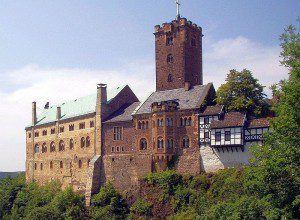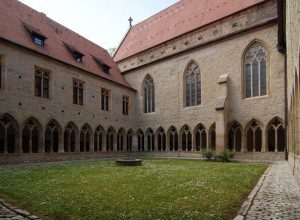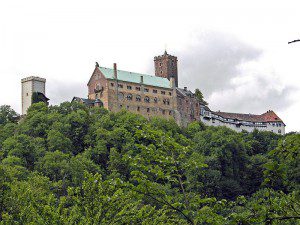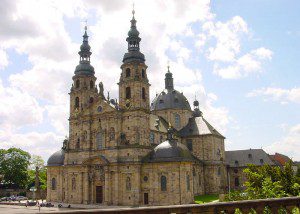
(Click on the photograph to enlarge it.)
The XXI. Congress of the International Association for the History of Religions now being over, my wife and I devoted a substantial part of the day to Martin Luther.

(Click to enlarge.)
We made a last trip down to the Erfurter Altstadt, for example — this time to visit the Augustinian cloister where Luther lived as a monk between 1505 and 1508, and where, in 1507, he was ordained a priest. It was in this monastery that he began to feel his way toward a doctrine of salvation by grace.
Later, driving toward Frankfurt, we went into Eisenach again (I’ve yet to report on the prior visit, three days ago) and headed up to the Wartburg, where, among other important things, Luther translated the New Testament.

(Click on the image to enlarge it.)
I’ll probably write at least one newspaper column on these places.
It’s dazzling how much of German cultural history — Goethe and Schiller and Bach and Liszt and Wagner and Luther and Meister Eckhart and etc. — is centered on Thuringia or Thüringen, this single German state.

(Click to enlarge.)
Continuing on, just for the fun of it, we drove to Fulda, the focal point of the famous “Fulda Gap” that played a role in the Allied defeat of Nazi Germany and occupied NATO military strategists throughout the cold war, and visited the baroque cathedral there where the relics of St. Boniface, “the apostle to the Germans,” are preserved.
Posted from Frankfurt, Germany










